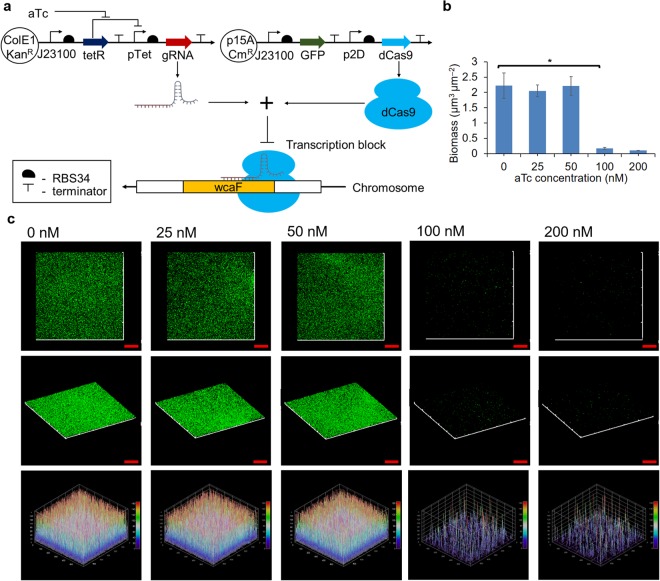Figure 1.
Using CRISPRi/dCas9 to repress gene (wcaF) involved in colanic acid synthesis can prevent biofilm formation. (a) Gene circuits that consist of constitutive dCas9 and GFP expression plasmid and aTc inducible gRNA expression plasmid. (b) Biomass of the biofilms derived using COMSTAT software based on confocal images. The biomass of biofilms formed by E. coli MG1655 in which the gRNAwcaF159 expression were induced by 25 nM and 50 nM aTc had no significant difference from the control group (gRNA−) which did not have aTc added (0 nM). In contrast, the biofilms of E. coli MG1655 in which the gRNAwcaF159 expression were induced by 100 nM and 200 nM aTc had significant lesser biomass than the control group (gRNA−). (c) Confocal images of biofilms formed by E. coli MG1655 when gRNA expression was induced by various aTc concentration. Biofilms of E. coli MG1655 with gRNA induced by 25 nM and 50 nM aTc had similar thickness with control (gRNA−), while those that were induced by 100 nM and 200 nM of aTc showed a reduced thickness of biofilm as compared to the control (gRNA−). The biofilm GFP intensity plots also indicate the thickness of biofilm induced by 100 nM and 200 nM of aTc were much thinner than the rest. Scale bars, 50 μm. All data are represented as mean ± std_dev (n = 3). *indicates P value < 0.05.

